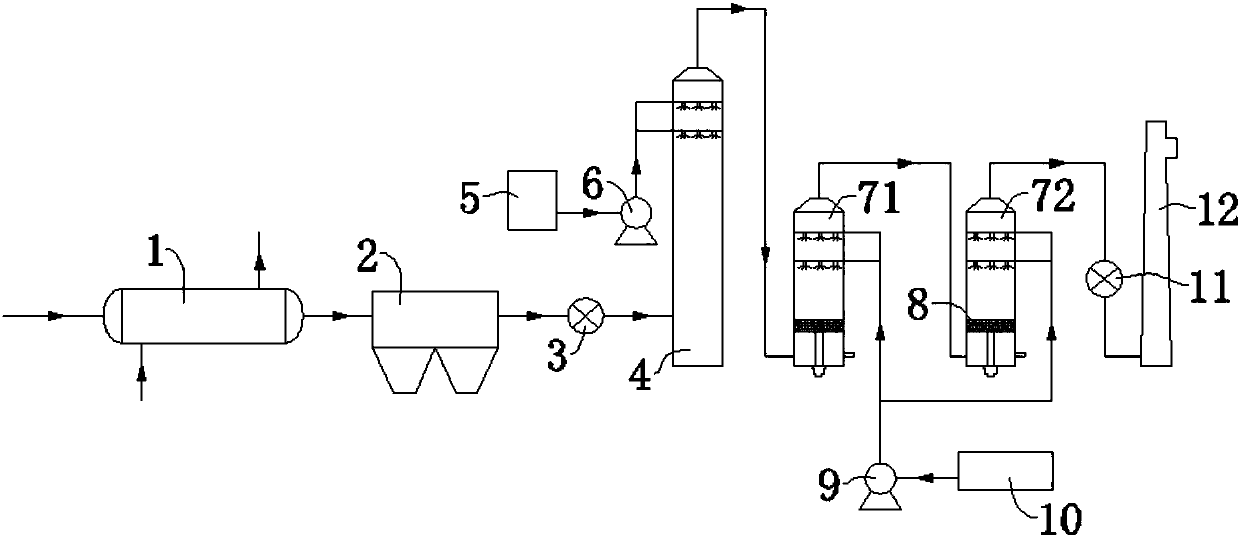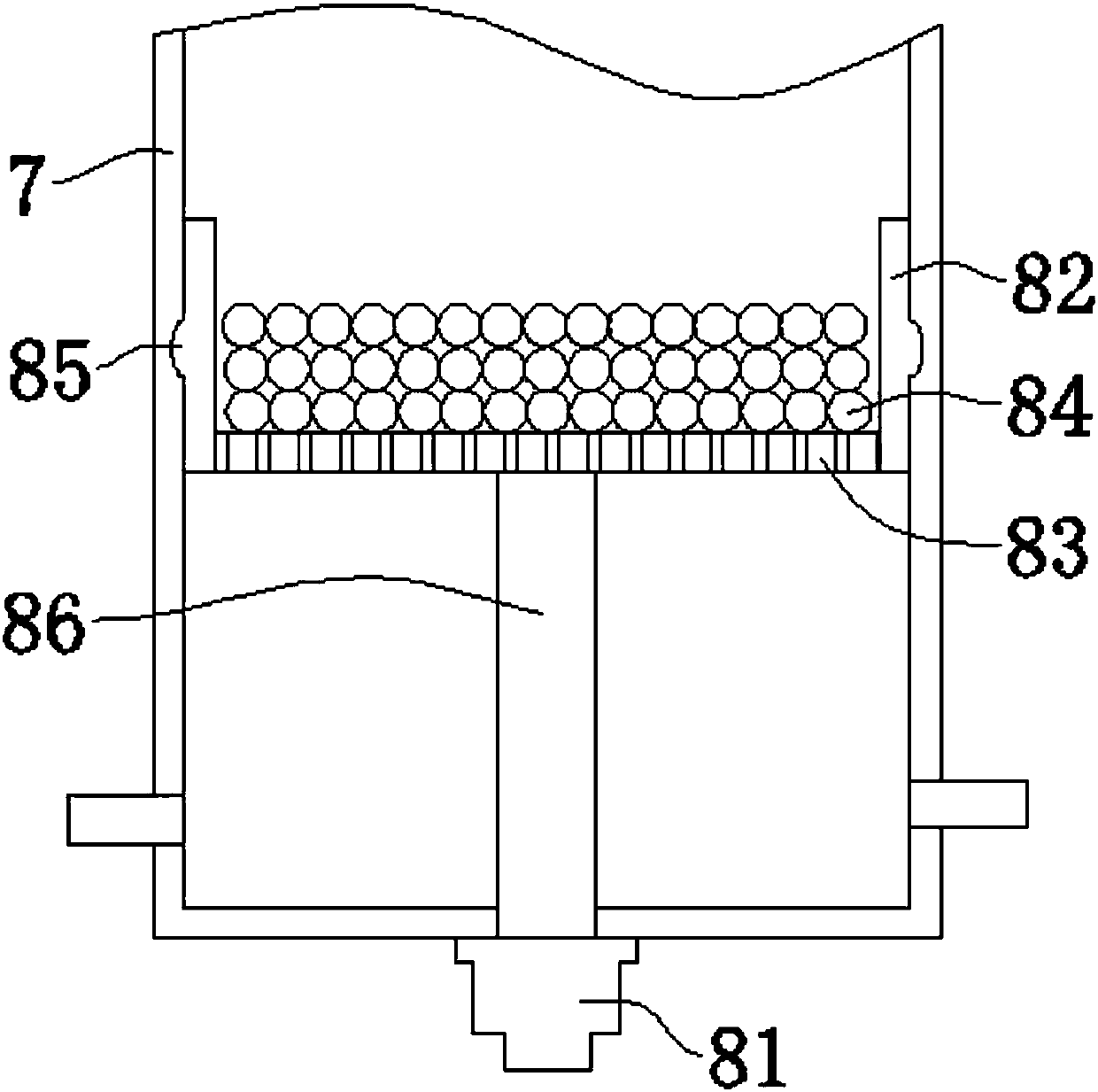Wet-method low-temperature denitration system
A low-temperature denitrification and wet desulfurization technology, applied in the field of wet low-temperature denitrification system, can solve the problems of not allowing wet spray denitrification, operating site, high operating cost, heavy economic burden, etc., to increase the liquid-gas contact area and The effect of mass transfer efficiency, reducing the economic burden of enterprises, and low investment and operation costs
- Summary
- Abstract
- Description
- Claims
- Application Information
AI Technical Summary
Problems solved by technology
Method used
Image
Examples
Embodiment
[0030] Embodiment: a kind of wet method low-temperature denitrification system, such as Figure 1-2 As shown, it includes condenser 1, pulse bag filter 2, 1# fan 3, wet desulfurization purification tower 4, wet low temperature denitrification purification tower 7, 2# fan 11, chimney 12, lye dosing tank 5, circulation Alkali pump 6, denitration agent dosing pump 9 and denitration agent circulation pool 10. Condenser 1, pulse bag filter 2, 1# fan 3, wet desulfurization purification tower 4, wet low temperature denitrification purification tower 7, 2# fan 11 and chimney 12 are connected by pipes in sequence. Condenser 1 is used to cool down the flue gas. The air inlet of condenser 1 is connected to the flue gas generating device. The flue gas generating device is an industrial boiler, ceramic kiln, brick factory kiln, heavy metal smelting furnace, and iron and steel smelting furnace. Wait. The pulse bag filter 2 is used to purify and remove dust from the flue gas. The flue gas ...
PUM
 Login to View More
Login to View More Abstract
Description
Claims
Application Information
 Login to View More
Login to View More - R&D
- Intellectual Property
- Life Sciences
- Materials
- Tech Scout
- Unparalleled Data Quality
- Higher Quality Content
- 60% Fewer Hallucinations
Browse by: Latest US Patents, China's latest patents, Technical Efficacy Thesaurus, Application Domain, Technology Topic, Popular Technical Reports.
© 2025 PatSnap. All rights reserved.Legal|Privacy policy|Modern Slavery Act Transparency Statement|Sitemap|About US| Contact US: help@patsnap.com


